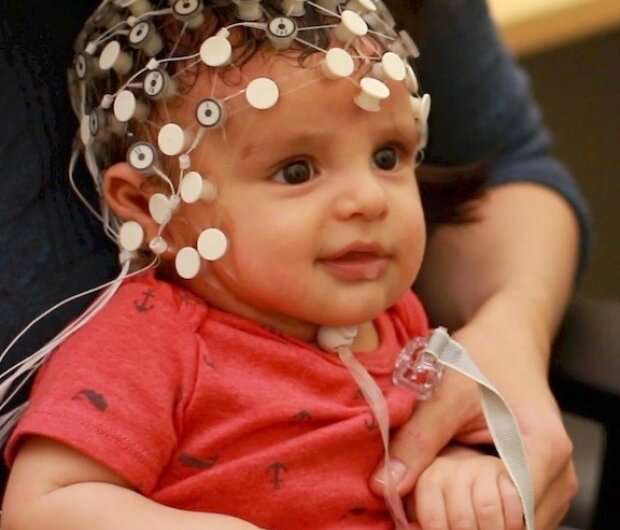
In the fall of 2021, Democrats pushed to establish a national paid leave program under the Build Back Better Act, an initiative that would guarantee paid family and sick leave to U.S. workers. The bill faltered in the Senate before eventually being shelved when it failed to garner enough votes.
Without a paid leave policy, the U.S. maintains its position as the only industrialized nation that doesn’t guarantee this aid to its citizens. Nearly 80% of U.S. workers do not receive paid leave through their employer, leaving them, when having children, to choose between earning a paycheck or bonding with their newborns.
According to developmental psychologists such as NYU Steinhardt Assistant Professor Natalie Brito, the lack of paid leave has profound consequences for both new mothers and their babies. To explore this impact, Brito studied a diverse sample of NYC families to examine links between paid leave and electrical activity in infant brains at the age of three months. She and her co-authors found that infants with increased activity of higher-frequency brain waves were 7.39 times more likely to have mothers with paid leave. Their findings, “Paid Maternal Leave is Associated with Infant Brain Function at 3-Months of Age,” are published in Child Development.
NYU News spoke with Brito about the state of maternity in the U.S., the benefits of paid leave, and the adverse impacts faced by those without it.
Why are the first several months of an infant’s life such an important period for brain development?
One of the key features of the brain is its plasticity, or ability to adapt to environmental experiences, and the brain is highly plastic during infancy. The first few months of life are so important for brain development because neural connections in the infant brain are emerging in the context of warm, predictable, and responsive social interactions between the parent and infant. This brain plasticity makes it easier for infants to learn about the world around them, but this plasticity also makes the brain much more susceptible to negative experiences like parental stress.
The first couple months after childbirth are also a stressful time for parents, and mothers, in particular, often find themselves facing post-birth complications, lactation difficulties, and sleep deprivation. Although daily stressors are common for parents, high levels of chronic stress can disrupt a parent’s ability to respond to their infant’s cues in a sensitive and timely manner. So parents have an enormous impact on the socioemotional and cognitive development of their infants, but need both time and resources to support this development.
Which populations in the U.S. currently are the least likely to have paid maternity leave? How do their experiences differ from those who do?
Currently, only 23% of all employed workers in the U.S. have access to paid parental leave through their employers. Nine states and the District of Columbia currently offer some form of paid leave, via state-run programs or temporary disability insurance, that allows parents to have partially-paid time off work to care for a new child. But in reality, these policies are very inconsistent in how much paid time parents are able to receive and the amount of wage replacement during leave.
Black mothers, single mothers, and mothers with lower levels of education have significantly less access to both paid and unpaid leave. Parents who do not have access to paid leave are more likely to return to work too early after childbirth—one report estimated that almost a quarter of mothers who did not have access to paid leave returned to work within 10 days of giving birth.
Mothers who took paid leave were less likely to be re-hospitalized after discharge, less likely to have postpartum depression, and more likely to breastfeed their infant. Infants of mothers who took paid leave were also less likely to be re-hospitalized after discharge, more likely to attend baby well-visits and receive vaccinations, and more likely to have better language and socioemotional skills during toddlerhood.
Our lab’s newest study suggests that compared to mothers with unpaid leave after childbirth, mothers with paid leave had less physiological stress, were more sensitive and responsive with their infants, and their infants demonstrated a brain activity profile that may reflect a more mature pattern of brain function.
What would an effective maternity paid leave policy in the U.S. look like? Is there research to support the benefits of paternity leave as well?
Paid leave needs to be granted on a national level to every working caregiver, regardless of the type of employment or full-time versus part-time status. The key is to provide enough wage compensation for that family to be economically stable during this important transition. Mothers need to be able to physically and mentally recover or persevere through the many postpartum challenges during this time. As many challenges start prenatally, having flexibility built into paid leave programs to begin during pregnancy would be an even greater benefit for mothers.
And although most of the research has examined benefits of paid maternal leave, paid leave policies need to be directed towards caregivers in general, not just mothers. Paternity leave has also been shown to positively impact relationships within families, and that increased time between fathers and infants may help attune fathers to the needs of their infants and partners.
Jade McClain, New York University

